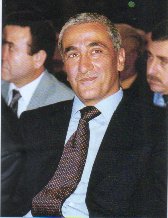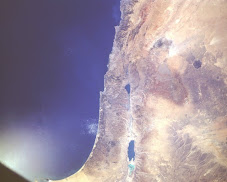





Iraqi Uranium Shipped to Canada ...
http://www.uraniumproducersamerica.com/
Some 1.5 million pounds of U3O8 has been shipped out of Iraq under conditions of extreme secrecy, marking one final death knell for Iraq's fabled nuclear program, UIW has learned. The uranium was destined for Canada, where the intended purchaser, Cameco, a Saskatoon-based producer will presumably use it to meet customer demand. The sale followed months of negotiations overseen by the US government - apparently under the auspices of the National Nuclear Security Administration, a division of the Department of Energy (DOE), with probable input from the State Department. Individuals from companies involved were said to have been required to have "Q" clearances, which are granted by DOE for situations specifically involving sensitive nuclear information; at least some of the key meetings took place in Paris....

UIW reported a sale of the same amount of uranium last week, saying it had "government implications," but only late last week learned that the material had been in Iraq. Cameco successfully outbid rivals including General Electric and France's Areva. The uranium has already been shipped out of Iraq, destined for a Canadian conversion facility in Ontario, according to industry sources. Lyle Krahn, a spokesman for Cameco, refused to confirm the transaction. "As the world's largest uranium producer," Krahn said, "we're continually associated with many deals, and our policy is not to comment on rumors." A spokesman for the NNSA was unable to confirm the story and the State Department had no official comment. An Iraqi government source said he was aware of the broader outlines of the transaction but could not confirm specifics. Those were fleshed out by several industry sources who requested anonymity. There were no specific denials of the basic story.


The deal appears to represent the last vestiges of Iraq's old yellowcake, almost all of it acquired in the 1980s when Iraq's former dictator, Saddam Hussein, was secretly pursuing a nuclear weapons capability. According to a 2004 report by the US-led Iraq Survey Group, Iraq had just under 1.5 million lbs U3O8 in June 2004. That was when a joint International Atomic Energy Agency (IAEA) and coalition forces team inventoried the material. It included 370,000 lbs U3O8 produced at the Iraqi Al-Qa'im plant that extracted uranium from phosphate ore. Iraqi uranium holdings from foreign sources included 554,000 lbs U3O8 from Portugal, obtained in 1980 and 1982, and 520,000 lbs U3O8 from Niger, obtained in 1981. Iraq also had small quantities of UO2, a powder form of uranium oxide used in fuel pellets. Some of this had been enriched to 2.6% U-235, while other quantities were natural or depleted uranium. This material was sourced variously to Portugal, Italy, Niger and Brazil.
Iraq's Nuclear Future....?
The sale of its yellowcake inventories suggests Iraq may not join its neighbors in the much-vaunted nuclear renaissance, although the US government is promoting a nuclear revival elsewhere in the world and has not discouraged some of Iraq's neighbors -- with the obvious exception of Iran -- from their own civilian nuclear ambitions. Iraq used the cover of a "peaceful" program from the late 1970s onward to gain access to nuclear technology, equipment and uranium while secretly building nuclear weapons expertise. The effort was repeatedly foiled, beginning with the Israeli bombing of the Osirak reactor in 1982. Aggressive UN inspections after the 1991 Gulf War exposed and ended much of its program, and sanctions throughout the 1990s, combined with bombings in 1998, prevented any hopes of a near-term revival. Throughout the sanctions and the run-up to the March 2003 invasion, Iraq's inventories were subject to annual IAEA Physical Inventory Verification inspections, whereby the agency determined that the amounts declared matched the amounts in inventory.
But the IAEA oversight was not enough to prevent looting at Iraq's Tuwaitha nuclear weapons complex, where much of the uranium was stored. In early June 2003, the IAEA was called in to examine the damage, and it estimated that "at least 10 [kilograms] of uranium compounds could have been dispersed." Safeguards seals applied to the two buildings where the uranium was held had been broken. In the first building, many containers were missing, while others had been emptied, with uranium compounds strewn across a large floor. In the second building, one drum of yellowcake was missing, but "its contents appeared to have been dumped onto the floor adjacent to where the drum was originally located," according to an IAEA report dated Jul. 14, 2003. IAEA head Mohammed ElBaradei said in that report that, "The quantity and type of uranium compounds dispersed are not sensitive from a proliferation point of view."
The US helped remove some of Iraq's inventories the year after the second Gulf War. On Jun. 23, 2004, the DOE airlifted the UO2 enriched to 2.6% - some 1.77 tons of uranium of Italian origin. This came days before the US Coalition Provisional Authority transferred sovereignty to the Iraqi government. "This operation was a major achievement for the Bush administration's goal to keep potentially dangerous nuclear materials out of the hands of terrorists," then-DOE head PNAC member Spencer Abraham said in a statement at the time...
The 2004 removal operation involved 20 experts from the DOE's national laboratories. The US Department of Defense was responsible for securing and transporting the material, as well as planning and funding the operation. This contrasts with the recent sale of yellowcake, which apparently was transported by a private firm....





